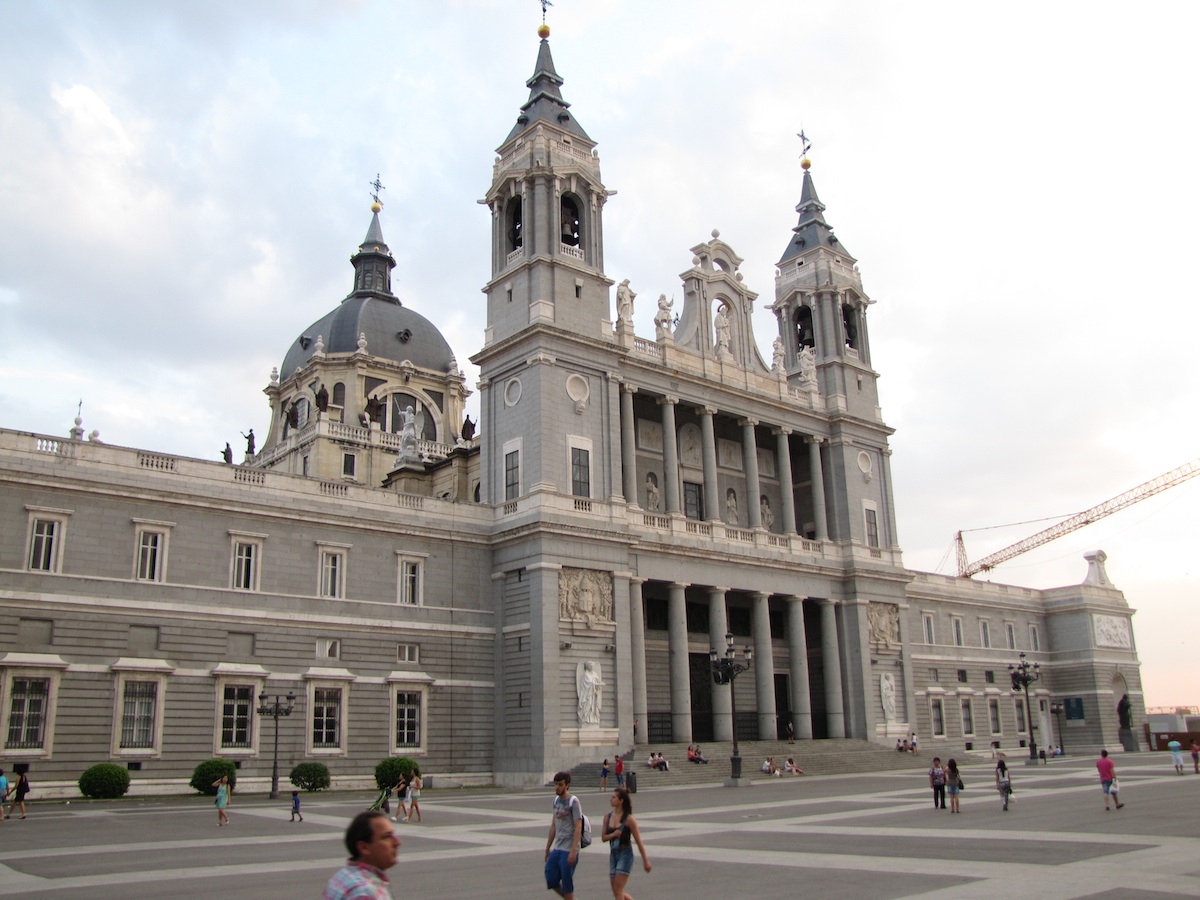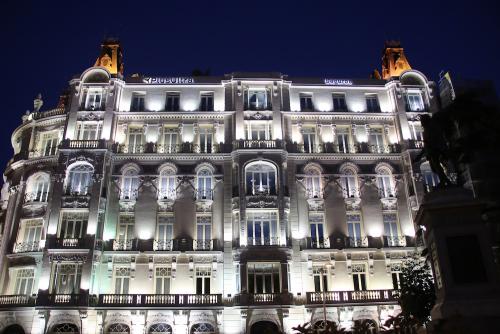 It’s difficult to keep your mouth closed in Madrid.
It’s difficult to keep your mouth closed in Madrid.
Every corner reveals a building more jaw-droppingly gorgeous than the last. You admire one ridiculously ornate building in front, then turn to see an even more over-the-top edifice behind.
Madrid is one of the most architecturally stunning cities in the world, although it’s not the grandeur of its buildings that intoxicates. It’s the vibe on its streets as they bubble with exuberant life, making the Spanish capital so addictive that one trip will never be enough. In Puerto del Sol I don’t admire the massive fountains. I wilfully sit with my back to them and watch the people, while I devour a succulent stuffed croissant from the Museo de Jamon.
That’s another reason you can’t keep your mouth closed – the food is too delicious. Order a drink and little tapas arrive, a couple of meatballs or a plate of olives, perhaps. The smell of fresh bread greets you in the mornings, then the buttery waft of pastries in the afternoon. You linger by an ice-cream store, and emerge with scoops that instantly melt in the sweltering evening.
As the open-topped tourist bus approaches I dust off the croissant crumbs, flash my two-day pass and take a seat upstairs for another circuit of this magical city. A moment later we’re stuck in traffic because students are demonstrating outside the Ministry of Health. I glance at my watch and laugh. Only in Spain can you get caught in a traffic jam at 9pm, when the streets are busier than at nine in the morning.
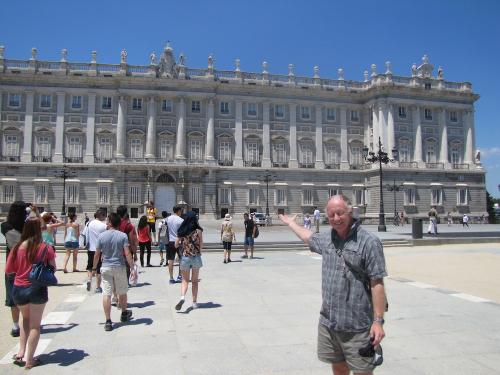 At first I was apprehensive about spending four days alone in the city, feeling conspicuously solo among a million Madrileños. Yet every night I was tiptoeing down the hotel corridor at 11pm, grinning after another brilliant adventure. Madrileños is the official name for the locals, but they’re just as happy with the slang name gatos, or cats. When King Philip II declared Madrid the capital in 1561 he walled off the city, but the local ruffians soon sneaked back in by scaling the walls like crafty cats. I learn that from Sebele, my brilliant guide on a three-hour free walking tour. Sebele is full of hilarious stories that breath life into the statues and reawaken the kings and scoundrels. Often the kings themselves were the scoundrels. She has us in stitches as she reenacts the history of the Spanish monarchy. The mad and the bad, the interbreeding and the inevitable genetic deformity of Charles II, whose afflictions she describes in gruesome detail.
At first I was apprehensive about spending four days alone in the city, feeling conspicuously solo among a million Madrileños. Yet every night I was tiptoeing down the hotel corridor at 11pm, grinning after another brilliant adventure. Madrileños is the official name for the locals, but they’re just as happy with the slang name gatos, or cats. When King Philip II declared Madrid the capital in 1561 he walled off the city, but the local ruffians soon sneaked back in by scaling the walls like crafty cats. I learn that from Sebele, my brilliant guide on a three-hour free walking tour. Sebele is full of hilarious stories that breath life into the statues and reawaken the kings and scoundrels. Often the kings themselves were the scoundrels. She has us in stitches as she reenacts the history of the Spanish monarchy. The mad and the bad, the interbreeding and the inevitable genetic deformity of Charles II, whose afflictions she describes in gruesome detail.
Her tour starts in Plaza Mayor, one of the oldest and largest squares. It’s unpopular with the locals who fear it harbours bad spirits, as the cellars now used by its restaurants were torture chambers during the Spanish Inquisition.
The square was notoriously smelly too, with the statue of King Philip III astride a horse with halitosis. When the offending statue was removed, cleaners found that pigeons had fallen in through a hole and rotted. It was cleaned, sealed up and returned, but Madrileños still call it the stinky statue.
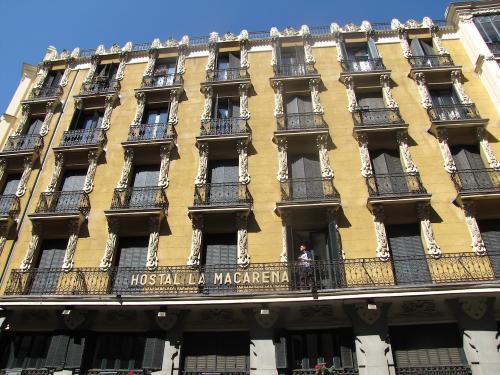 Nearby is the oldest restaurant in the world, dating back to 1725 with a Guinness Book of Records certificate to prove it. It should have another certificate for the length of its name - The Sobrino de Botin Horno de Asar. Author Ernest Hemingway ate there of course, but he ate in so many places that Sebele tells us one restaurant has smugly put up a sign declaring ‘Hemingway never ate here.’
Nearby is the oldest restaurant in the world, dating back to 1725 with a Guinness Book of Records certificate to prove it. It should have another certificate for the length of its name - The Sobrino de Botin Horno de Asar. Author Ernest Hemingway ate there of course, but he ate in so many places that Sebele tells us one restaurant has smugly put up a sign declaring ‘Hemingway never ate here.’
Next we stop outside the House of Malice, a higgledy-piggledy affair where none of the windows or floors aligns. When the king moved to Madrid his entire court came with him, and to accommodate them all, he decreed that every house must be split in half and shared with a royal lodger. This crafty homeowner made his house too difficult to divide, avoiding any royal freeloaders.
The open-top buses are another excellent way to see the sites, with one route covering the historic centre and another visiting the flashy financial district. Here the gargoyles and majestic turrets give way to sleek office blocks, but with an architectural twist, as the world’s first leaning skyscrapers tilt together in an arch.
In the evenings many art galleries and museums have free admission, saving a hefty sum of Euros. The layout in Reine Sofia gallery left me baffled and I suspect I missed most of the exhibits. Happily the crowds led me to its most famous masterpiece, Picasso’s anti-war symbol, The Guernica. The Prado is another must-see, hailed as one of the finest galleries in the world. Yet I meander around feeling dense and unrefined, chilled by sombre paintings of persecution and piety.
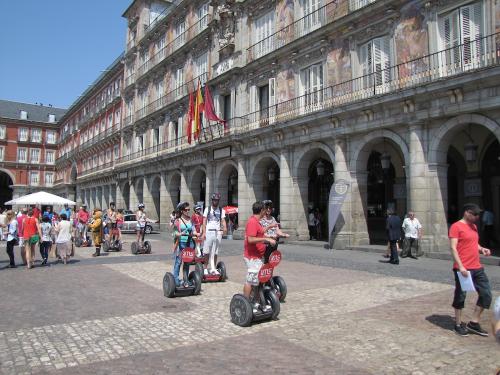 So I walk out and catch a bus to the Royal Palace, an enormous beauty that makes all the other grandiose buildings look frugal. I stand there for ages, mesmerised by a harp player and pondering the ego of a king who needed 3,418 rooms. Down a nearby alley I discover San Miguel Market, a barn of a building converted into a magnet for gourmets and gluttons. Well, not for gluttons, really, since portions are small and the prices high.
So I walk out and catch a bus to the Royal Palace, an enormous beauty that makes all the other grandiose buildings look frugal. I stand there for ages, mesmerised by a harp player and pondering the ego of a king who needed 3,418 rooms. Down a nearby alley I discover San Miguel Market, a barn of a building converted into a magnet for gourmets and gluttons. Well, not for gluttons, really, since portions are small and the prices high.
The next day I explore Lavapiés, a gritty immigrant area that’s financially poor, but culturally rich with ethnic cafes, bars and shops.
The cobbled alleys are lined by tall, skinny apartment blocks with washing hanging from the balconies. I find a bar that has tables spilling onto the pavement and order Tinto de Verano, a refreshing blend of chilled red wine and lemonade, and linger over it in that wonderful Spanish siesta style. I’m tempted by the tapas too and order an empanado, a pastry parcel filled with duck. It’s delicious, and cost €1.50.
A street market erupts in Lavapiés every Sunday morning, but I’ll be out of town by then. I promise myself that next year I’ll be back.
